DENIS BARTELL
For naming Big Red while travelling on foot
40 years after he'd discovered it while travelling the Simpson on foot, Denis Bartell sat on the crest of Big Red Dune to again watch the sun drop, this time with fellow adventurer Ron Moon. It has become a ritual for the veteran Simpson-bound traveller every time he passes through. He's now witnessed the scene more than 70 times.
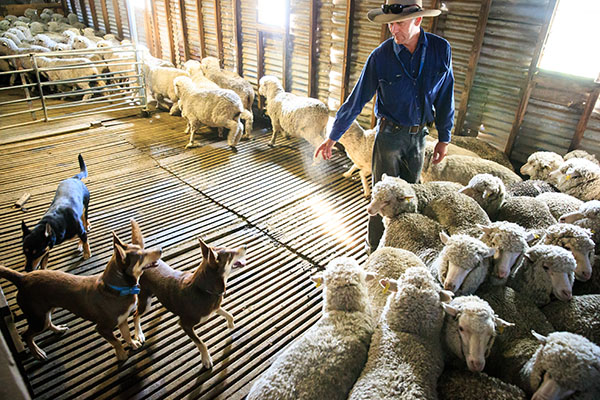


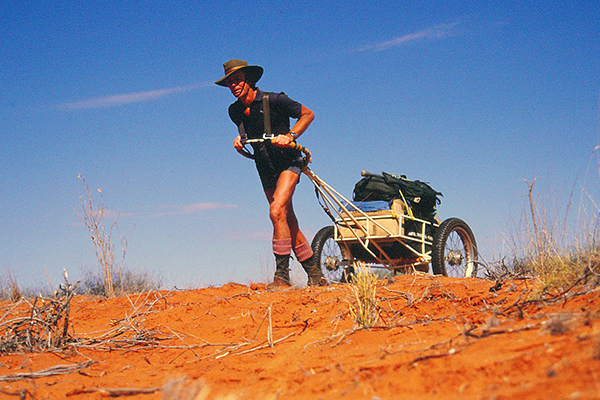
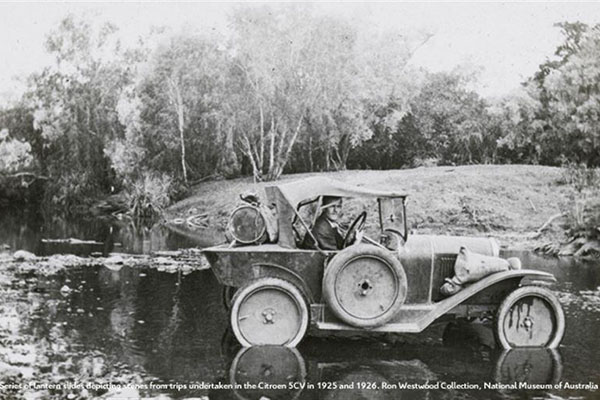
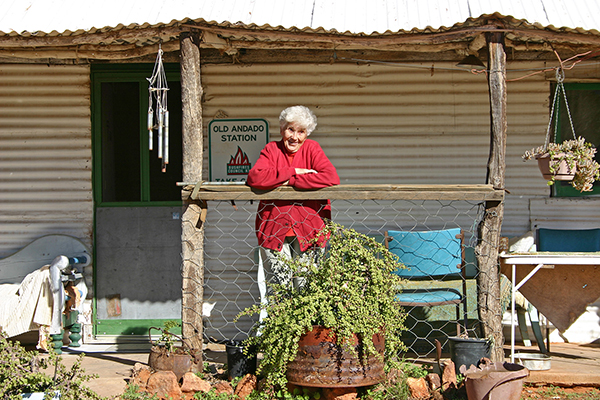
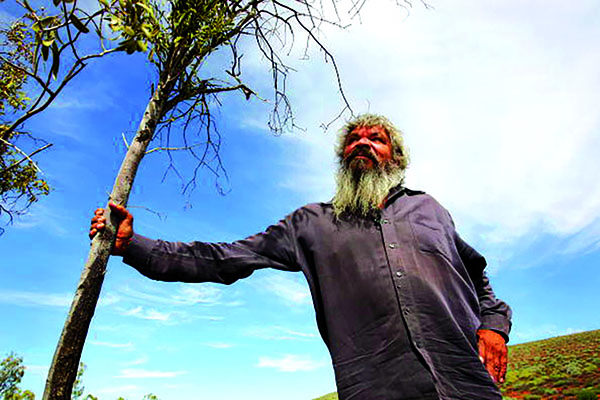
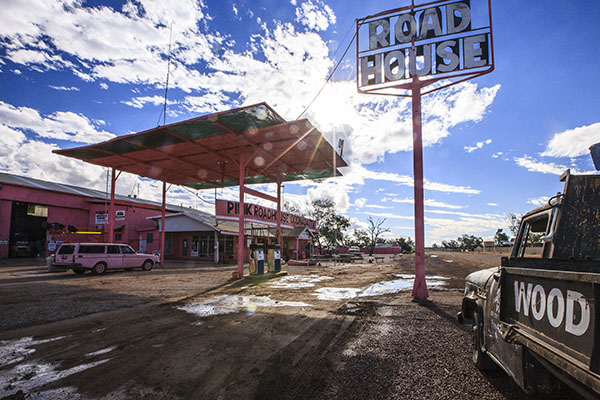
Back in 1980, Denis Bartell embarked on an astonishing trip to the Southern Simpson, east from Dalhousie, with his teenage son in a Shorty LandCruiser. His mission: To retrace the footsteps of David Lindsay's 1886 expedition.
To navigate, Denis relied upon his tried and true methods of compass bearing to a tree, rock or dune, then following the shadow of his aerial! His remarkable methods clearly worked, with Denis discovering six of the eight Aboriginal wells found by Lindsay as well as two of Lindsay's blazed trees!
NEVILLE WESTWOOD
For being first to circumvent Australia in a car
It's amazing where a wrong turn can lead you; take the story of Neville Westwood, the first motorist to circle Australia — and he did it in a Citroen 5CV!
The Seventh Day Adventist left Perth with fellow missionary, Greg Davies, in August 1925, pushing through to Meekatharra, on to Nullagine, Marble Bar and Broome, before carrying their vehicle across the Fitzroy River with the help of 12 Aborigines.
The two used cowhide and grass to fix their tyres at the side of the tracks, and called on the help of a blacksmith posted at a remote cattle station to repair their gearbox after they stripped its gear cogs near Halls Creek.
The two men reached Darwin in early October and arrived in Sydney in mid-November, with Westwood continuing back home to Perth, solo. He arrived on December 30, 148 days after the trip began.
MOLLY CLARK
For reviving Old Andado Station, NT
When Molly Clark arrived at Andado Station in 1955, there were no windows, plumbing or power to her humble home.
She and her husband carried water to their kitchen, bathroom and laundry and used kerosene to light their home and power their fridge. The floors were made from cement over ash and fat, with cement walls, while the roof was a sapling structure topped with grass thatch, only much later replaced with white-washed corrugated iron.
Summer temperatures could reach well over 50°C, and access to the station, via a goat trail through the scrub, was slow and hard, until the 1970s when a road was cut from Alice Springs to Old Andado via Santa Teresa.
Keen to share tales of the remarkable hardships endured by those living in rural regions, Molly and her husband Mac opened their station to tourists, but sadly, Mac died in an aircraft accident in 1978.
Station life was hard on her own, with Molly losing all of her stock (and subsequently her land) when the government inspected the premises for brucellosis and tuberculosis in the early 1980s. Through hard work and perseverance, Molly eventually secured a Crown Lease for the homestead known as 'Old Andado'.
In 1993, Molly founded the National Pioneer Women’s Hall of Fame museum in Alice Springs, as she believed women were not properly recognised for their achievements.
CLIFFORD COULTHARD
For redefining Australia's indigenous history
On his way to a restroom break, local Adnyamathanha elder Clifford Coulthard uncovered a remarkable prehistoric shelter that places the existence of Australia’s Indigenous population at 49,000 years ago, a gob-smacking 10,000 years earlier than originally thought.
The local guide was part of team surveying gorges in the northern Flinders Ranges, led by Giles Hamm, a consultant archaeologist and doctoral student at La Trobe University.
‘Warratyi’, 550km north of Adelaide, contained evidence of human interaction with megafauna, as well as artefacts that demonstrated the use ochre and bone and stone axe technologies significantly earlier than first thought.
ADAM AND LYNNIE PLATE
For painting a roadhouse pink
In 1975, self-confessed hippies Adam and Lynnie Plate arrived at the little Aboriginal community of Oodnadatta, chasing the Ghan on camels, and never left.
Welcomed as part of the community, Adam earned a crust repairing bikes for musterers working at the nearby stations, while Lynnie set up the ‘Tuckerbox’ selling snacks and supplies, complete with a giant Rolling Stone-style mouth and tongue.
When the Ghan was relocated and the old track closed in 1980, Oodnadatta was expected to die like other towns before it, but Adam and Lynnie saw its proximity to the Painted Desert, the Simpson Desert, hot springs at Dalhousie and Coward Springs as a key 4WDing attraction.
So the capitalise on its success, Adam and Lynnie immortalised the town by naming the 600km road “The Oodnadatta Track”.
In 1983, fuel was added to the Plates’ service and the place was renamed the Oodnadatta Traders. It was Adam’s idea to paint it pink—as a former art student, he knew the power of juxtaposition, and that the contrast between the outback and a candy pink roadhouse would be a talking point for travellers. Shortly after that, it became known as the Pink Roadhouse and, to this day, is still a talking point.




